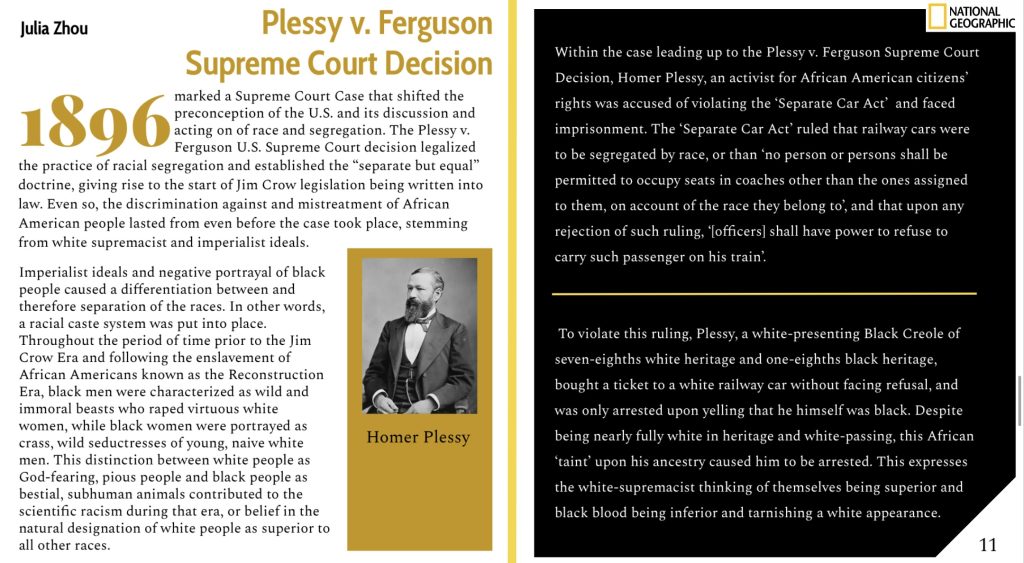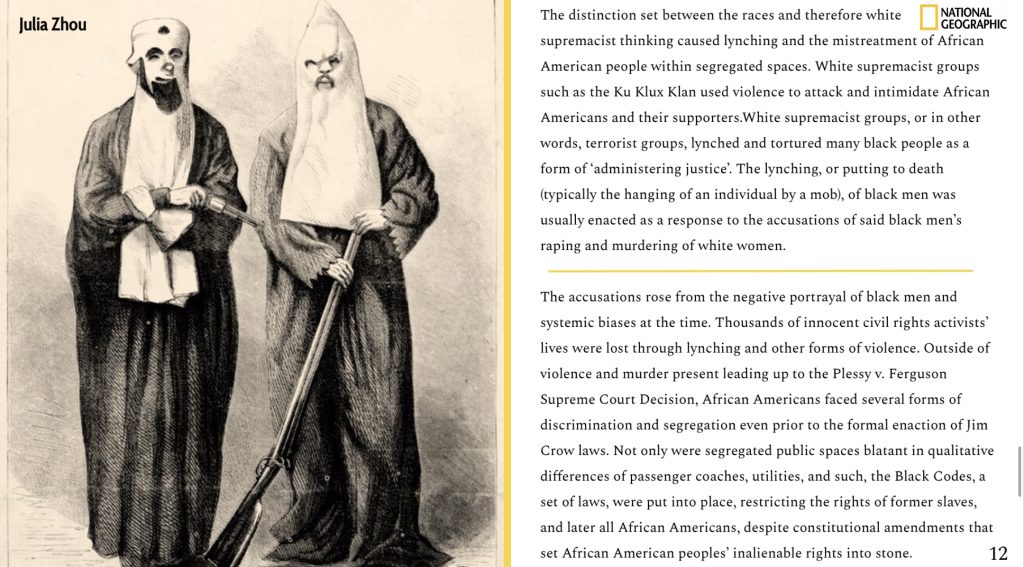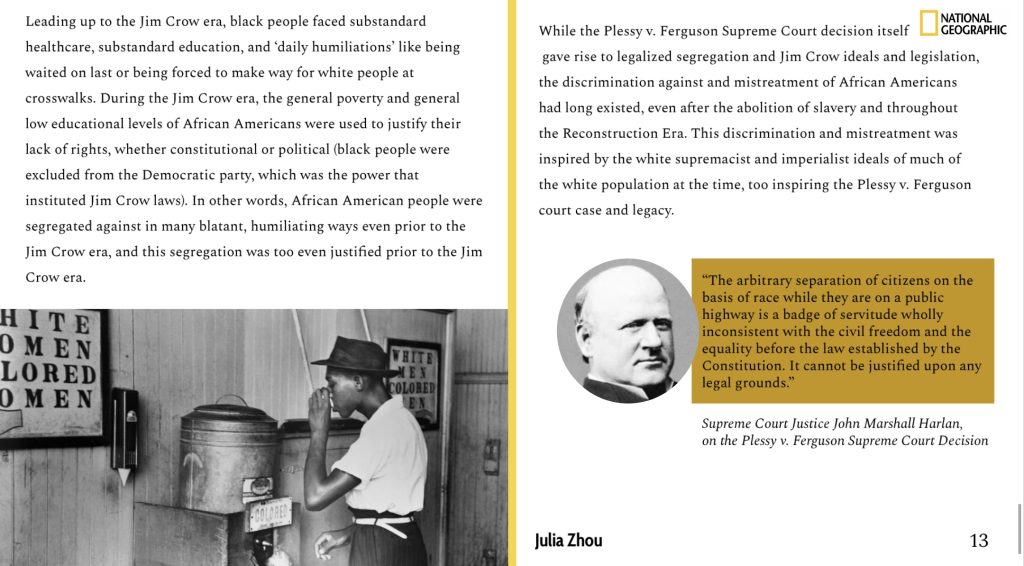1896 marked a Supreme Court Case that shifted the preconception of the U.S. and its discussion and acting on of race and segregation. The Plessy v. Ferguson U.S. Supreme Court decision legalized the practice of racial segregation and established the “separate but equal” doctrine, giving rise to the start of Jim Crow legislation being written into law. Even so, the discrimination against and mistreatment of African American people lasted from even before the case took place, stemming from white supremacist and imperialist ideals.
Imperialist ideals and negative portrayal of black people caused a differentiation between and therefore separation of the races. In other words, a racial caste system was put into place. Throughout the period of time prior to the Jim Crow Era and following the enslavement of African Americans known as the Reconstruction Era, black men were characterized as wild and immoral beasts who raped virtuous white women, while black women were portrayed as crass, wild seductresses of young, naive white men. This distinction between white people as God-fearing, pious people and black people as bestial, subhuman animals contributed to the scientific racism during that era, or belief in the natural designation of white people as superior to all other races.
Within the case leading up to the Plessy v. Ferguson Supreme Court Decision, Homer Plessy, an activist for African American citizens’ rights was accused of violating the ‘Separate Car Act’ and faced imprisonment. The ‘Separate Car Act’ ruled that railway cars were to be segregated by race, or than ‘no person or persons shall be permitted to occupy seats in coaches other than the ones assigned to them, on account of the race they belong to’, and that upon any rejection of such ruling, ‘[officers] shall have power to refuse to carry such passenger on his train’. To violate this ruling, Plessy, a white-presenting Black Creole of seven-eighths white heritage and one-eighths black heritage, bought a ticket to a white railway car without facing refusal, and was only arrested upon yelling that he himself was black. Despite being nearly fully white in heritage and white-passing, this African ‘taint’ upon his ancestry caused him to be arrested. This expresses the white-supremacist thinking of themselves being superior and black blood being inferior and tarnishing a white appearance.
The distinction set between the races and therefore white supremacist thinking caused lynching and the mistreatment of African American people within segregated spaces. White supremacist groups such as the Ku Klux Klan used violence to attack and intimidate African Americans and their supporters.White supremacist groups, or in other words, terrorist groups, lynched and tortured many black people as a form of ‘administering justice’. The lynching, or putting to death (typically the hanging of an individual by a mob), of black men was usually enacted as a response to the accusations of said black men’s raping and murdering of white women. The accusations rose from the negative portrayal of black men and systemic biases at the time. Thousands of innocent civil rights activists’ lives were lost through lynching and other forms of violence.
Outside of violence and murder present leading up to the Plessy v. Ferguson Supreme Court Decision, African Americans faced several forms of discrimination and segregation even prior to the formal enaction of Jim Crow laws. Not only were segregated public spaces blatant in qualitative differences of passenger coaches, utilities, and such, the Black Codes, a set of laws, were put into place, restricting the rights of former slaves, and later all African Americans, despite constitutional amendments that set African American peoples’ inalienable rights into stone. Leading up to the Jim Crow era, black people faced substandard healthcare, substandard education, and ‘daily humiliations’ like being waited on last or being forced to make way for white people at crosswalks. During the Jim Crow era, the general poverty and general low educational levels of African Americans were used to justify their lack of rights, whether constitutional or political (black people were excluded from the Democratic party, which was the power that instituted Jim Crow laws). In other words, African American people were segregated against in many blatant, humiliating ways even prior to the Jim Crow era, and this segregation was too even justified prior to the Jim Crow era.
While the Plessy v. Ferguson Supreme Court decision itself gave rise to legalized segregation and Jim Crow ideals and legislation, the discrimination against and mistreatment of African Americans had long existed, even after the abolition of slavery and throughout the Reconstruction Era. This discrimination and mistreatment was inspired by the white supremacist and imperialist ideals of much of the white population at the time, too inspiring the Plessy v. Ferguson court case and legacy.


